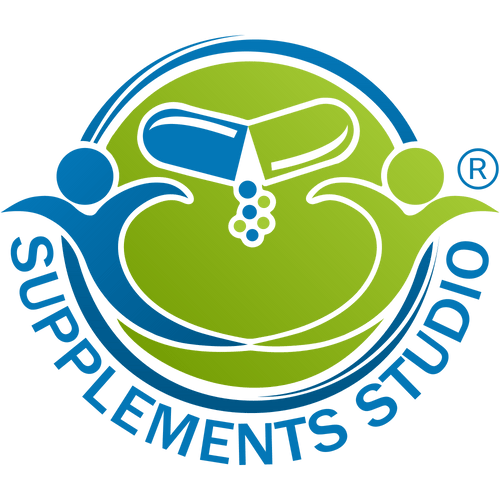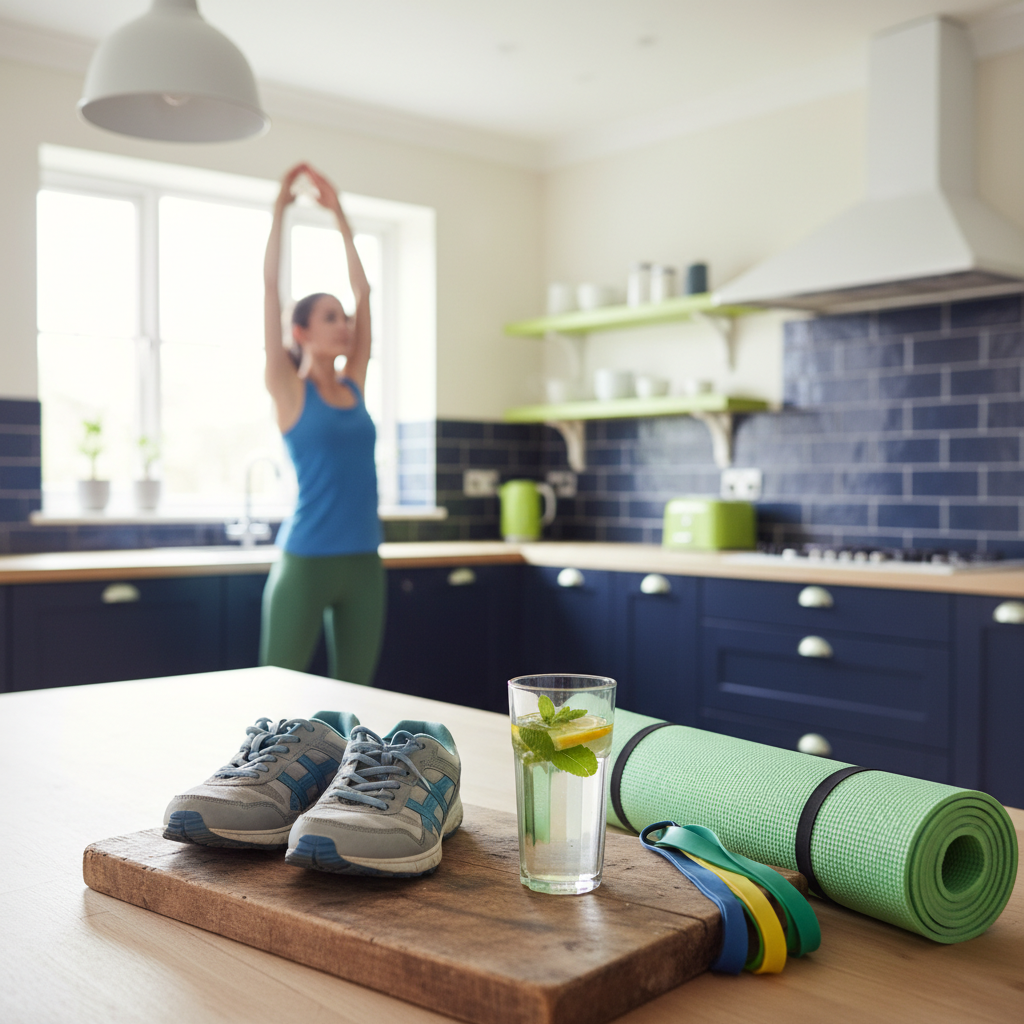Key Takeaways
- A full-body workout targets most or all major muscle groups in one session.
- It maximizes workout efficiency by combining multiple muscle groups.
- Compound movements are central to full-body workouts, reflecting real-life activities.
- This approach promotes balanced fitness gains across the entire body.
Table of Contents
- Why Full-Body Workouts Matter for Active, Everyday Wellness
- Full-Body Workouts vs. Split Routines: Which Supports Whole-Life Vitality?
- Key Movement Patterns: The Science of Building Functional Strength
- Designing Your Full-Body Workout: Blueprint for Progress
- Sample Full-Body Workout Programs for Every Level
- Actionable Strategies to Maximize Full-Body Workout Results
Full-Body Workout Guide: Science-Backed Movement for Real Life
Why Full-Body Workouts Matter for Active, Everyday Wellness
The Big Picture, Definition & Key Principles
A full-body workout centers on training all major muscle groups, chest, back, legs, shoulders, arms, and core, within a single 45-60 minute session. This approach prioritizes compound movements like squats, push-ups, and rows that engage multiple joints and muscle groups simultaneously, mimicking the integrated movement patterns your body uses throughout daily life.
The science behind this efficiency lies in muscle recruitment. When you perform a squat, you're not just working your quadriceps, you're engaging your glutes, hamstrings, calves, and core stabilizers. This multi-muscle activation translates directly to functional strength for activities like climbing stairs, lifting groceries, or playing with children.
Research published in the Journal of Strength and Conditioning Research demonstrates that full-body routines produce similar strength gains to split routines while requiring fewer weekly sessions. This efficiency allows you to maintain fitness gains while preserving time for other wellness priorities like meal preparation, adequate sleep, and stress management.
For those seeking to support their overall health, incorporating a calcium magnesium supplement into their daily routine may help support bone and muscle function, especially when paired with a consistent workout schedule.
Whole-Body Gains: Strength, Mobility, and More
Full-body training delivers benefits that extend far beyond the gym. Compound movements support intermuscular coordination, the ability of different muscle groups to work together efficiently. This enhanced coordination supports better posture during long work days, and helps maintain the mobility needed for graceful aging.
Clean, Efficient, and Time-Saving
Training 2-4 times per week delivers optimal results without overwhelming your schedule. This frequency allows adequate recovery between sessions while maintaining the consistency needed for long-term progress. Unlike split routines that require 5-6 weekly sessions to train all muscle groups, full-body workouts respect the reality of busy lives while delivering comprehensive fitness benefits.
Full-Body Workouts vs. Split Routines: Which Supports Whole-Life Vitality?

Understanding the differences between training approaches helps you choose the method that aligns with your lifestyle and goals. Both full-body and split routines can build strength and support fitness, but they serve different needs and preferences.
| Criteria | Full-Body Workouts | Split Routines |
|---|---|---|
| Training Frequency | 2-4 sessions weekly | 4-6 sessions weekly |
| Session Length | 45-60 minutes | 30-90 minutes |
| Muscle Coverage | All major groups in each session | 1-2 muscle groups per session |
| Schedule Flexibility | High - can skip a day without losing balance | Lower - missing sessions creates gaps |
| Recovery Needs | Full rest days between sessions | Active recovery possible |
Why & How: Suitability and Individualization
Beginners thrive with full-body routines because they provide frequent practice with fundamental movement patterns. Learning to squat, push, and pull multiple times per week accelerates skill development and builds confidence with proper form.
Advanced trainees may choose split routines when targeting specific muscle growth or addressing particular areas. However, many experienced athletes return to full-body training for its time efficiency and functional benefits, especially when balancing fitness with career and family demands.
Making the Best Choice
Your optimal routine depends on available time, recovery capacity, and personal goals rather than arbitrary rules. Someone training for general health and longevity may find 3 full-body sessions per week perfect, while an athlete preparing for competition might benefit from more specialized programming. The key is choosing an approach you can maintain consistently over months and years.
For more insights on optimizing your supplement routine to complement your training, read when is the best time to take a multivitamin.
Key Movement Patterns: The Science of Building Functional Strength
Effective full-body workout programs are built around five fundamental movement patterns that form the foundation of human locomotion and daily activities. These patterns ensure balance across all muscle groups while maximizing training efficiency. Understanding these patterns helps you create a workout routine that supports functional movement and long-term vitality.
Designing Your Full-Body Workout: Blueprint for Progress
Creating an effective full-body workout starts with understanding how to structure your session for maximum efficiency. The key lies in prioritizing compound movements that work multiple muscle groups simultaneously, then adding targeted exercises for complete development.
Core session structure:
- Begin with a dynamic 10-minute warm-up featuring movement preparation
- Start with major compound exercises when energy levels are highest
- Include 6-8 exercises covering all movement patterns
- End with core stabilization and brief mobility work
| Movement Pattern | Beginner Exercise | Intermediate Exercise | Advanced Exercise |
|---|---|---|---|
| Squat | Bodyweight squat | Goblet squat | Barbell back squat |
| Push | Incline push-up | Standard push-up | Weighted push-up |
| Pull | Resistance band row | Dumbbell row | Pull-up variations |
| Hinge | Glute bridge | Romanian deadlift | Conventional deadlift |
| Core | Modified plank | Standard plank | Weighted plank |
Timing and progression matter as much as exercise selection. Beginners should start with 2-3 sets of 8-12 repetitions, resting 60-90 seconds between exercises. As strength builds, we can increase weight, add repetitions, or reduce rest periods to maintain challenge and growth.
Adapting to Your Space
Your environment shouldn't limit your movement potential. Home workouts thrive with bodyweight exercises, resistance bands, and household items like water jugs or backpacks filled with books. Outdoor enthusiasts can use park benches for step-ups, playground equipment for pull-ups, or simply embrace bodyweight movements in fresh air.
The key lies in creative adaptation rather than equipment dependence. A sturdy chair becomes your dip station, stairs transform into cardio intervals, and your living room floor provides ample space for core work and stretching.
To further support your body's recovery and immune system as you adapt your workouts, consider adding liposomal vitamin C to your daily regimen.
Sample Full-Body Workout Programs for Every Level

What does a beginner full-body routine look like?
A beginner routine focuses on mastering movement patterns with 5-6 basic exercises, performed 2-3 times per week with adequate rest between sessions.
Beginner Full-Body Routine (3 Days/Week)
This foundational program builds strength while teaching proper movement mechanics:
- Bodyweight or goblet squats: 3 sets of 10-12 reps
- Incline or standard push-ups: 3 sets of 8-10 reps
- Dumbbell rows: 3 sets of 10-12 reps
- Shoulder press: 3 sets of 8-10 reps
- Plank hold: 3 sets of 20-30 seconds
- Glute bridges: 3 sets of 12-15 reps
Rest 60-90 seconds between exercises, focusing on controlled movement quality over speed or heavy weight.
At-Home, Limited Equipment Routine
Transform your living space into an effective training environment with these equipment-minimal exercises:
- Bodyweight squats to chair: Perfect depth every time
- Chair-assisted dips: Target triceps and shoulders
- Backpack rows: Fill with books for adjustable resistance
- Wall sits: Build leg endurance and mental toughness
- Bird dog: Enhance core stability and coordination
- Step-ups on sturdy surface: Unilateral leg strength
For additional tips on supporting your nutrition and performance, check out our guide on the best nutritional supplements to keep you feeling your best.
Intermediate/Advanced Routine
Progressive overload becomes crucial as fitness levels advance. Advanced practitioners can incorporate:
- Bulgarian split squats: Challenge single-leg strength and balance
- Romanian deadlifts: Target posterior chain with precision
- Single-arm dumbbell rows: Address strength imbalances
- Pike push-ups: Progress toward vertical pressing
- Side plank variations: Lateral core stability
Advanced trainees benefit from shorter rest periods (45-60 seconds) on accessory movements while maintaining longer recovery for compound lifts.
To help support joint health and mobility as you progress, explore our range of bone and joint supplements designed for active lifestyles.
Real-Life Success Scenarios
Our customers integrate these routines seamlessly into busy lives. Marketing executives squeeze in resistance band sessions between client calls, weekend cyclists use park benches for post-ride strength work, and parents turn playground visits into family fitness time.
The beauty of a well-designed workout routine lies in its adaptability to real circumstances rather than perfect conditions.
For more real-world strategies and wellness stories, browse our blog for inspiration.
Actionable Strategies to Maximize Full-Body Workout Results
Prioritize Compound Movements
Start every session with your biggest bang-for-buck exercises. Squats, deadlifts, push-ups, and rows recruit multiple muscle groups simultaneously, maximizing training efficiency and functional strength transfer to daily activities.
These movements mirror real-world demands, squatting to pick up children, pushing heavy doors, and pulling groceries from car trunks. By prioritizing compound patterns, we build strength that serves life beyond the gym.
Warm-Up & Mobility Essentials
Dedicate 10-15 minutes to movement preparation before diving into strength work:
- Dynamic stretches: Leg swings, arm circles, hip circles
- Activation exercises: Glute bridges, band pull-aparts, bodyweight squats
- Movement rehearsal: Practice your main exercises with light weight or bodyweight
This investment in preparation pays dividends in performance quality and injury prevention.
Training Intensity & Progression
As you increase your training intensity, it's important to support your immune system and overall health. Explore our selection of supplements for immunity support to help you stay resilient throughout your fitness journey.
For a deeper dive into the science behind full-body training, see this research on resistance training strategies.
If you're interested in how nutrition and supplementation can further enhance your results, this study on exercise and nutrition offers additional evidence-based insights.
Frequently Asked Questions
What are the main benefits of incorporating compound movements in a full-body workout?
Compound movements engage multiple muscle groups and joints simultaneously, making workouts more efficient by maximizing muscle recruitment. They reflect real-life activities, enhancing functional strength and coordination across the body.
How do full-body workouts compare to split routines in terms of training frequency and overall efficiency?
Full-body workouts typically require fewer weekly sessions while producing similar strength gains compared to split routines. This approach saves time and supports consistent progress without overwhelming your schedule.
Why is full-body training considered effective for improving functional strength and mobility?
Full-body training promotes intermuscular coordination by engaging various muscle groups together, which supports better posture and movement patterns. This integrated approach helps maintain mobility and resilience needed for everyday activities and graceful aging.
How often should I perform full-body workouts to achieve balanced fitness gains without overtraining?
Training two to four times per week allows for effective progress while providing adequate recovery between sessions. This frequency balances workout benefits with time for other wellness priorities like rest and nutrition.























 Login
Login







